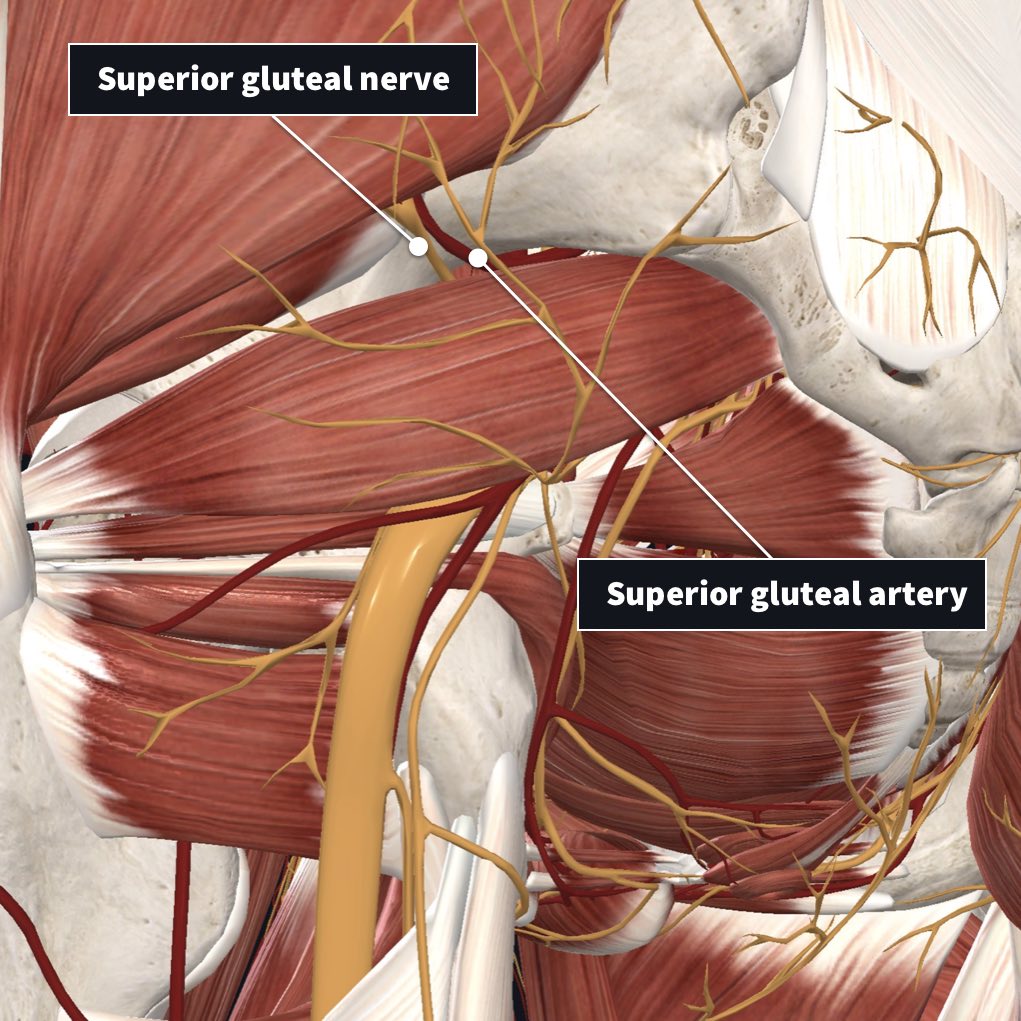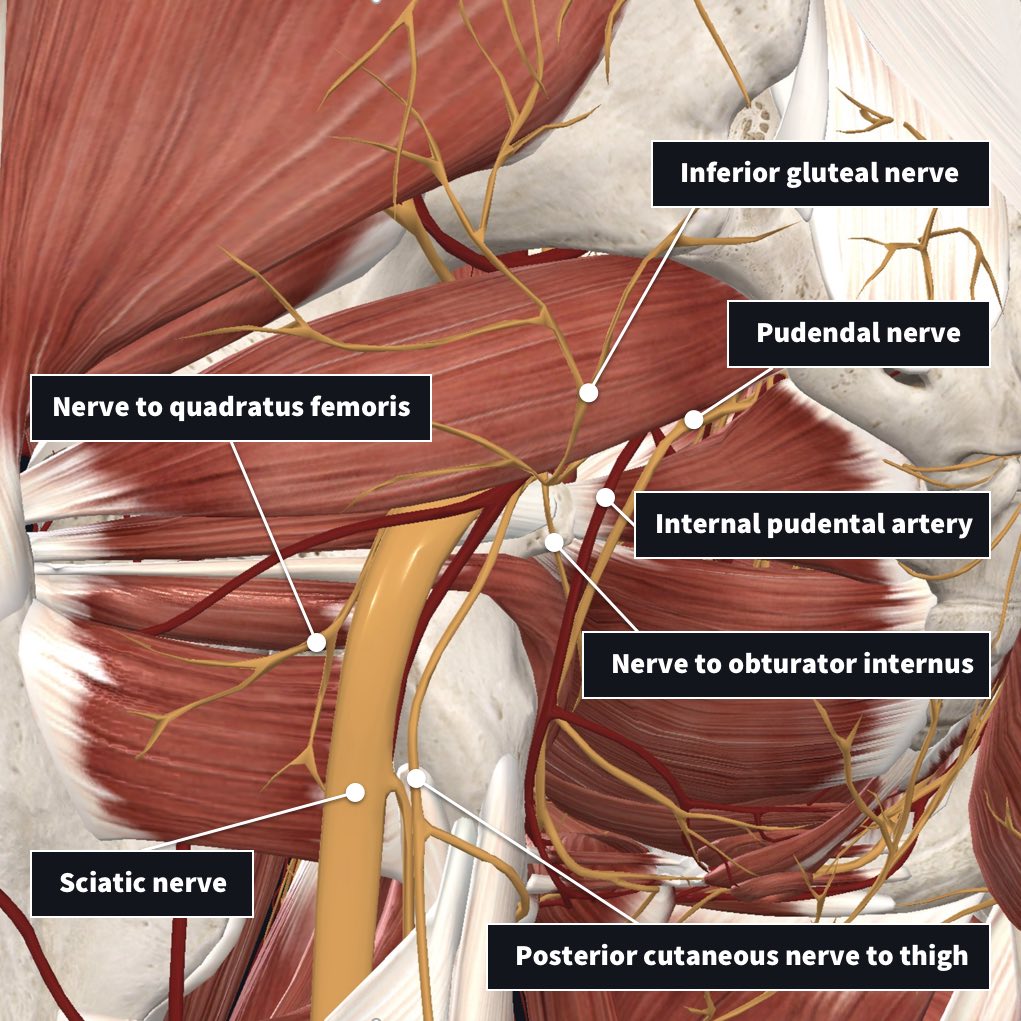
The piriformis muscle, located deep in the gluteal region, is not just important for laterally rotating the thigh ?. It also works as a landmark where we can identify several nerves/vessels that pass superiorly and inferiorly to it.
Piriformis originates from the anterior surface of the sacrum and inserts to the superior border of the greater trochanter of the femur. It provides external rotation, abduction and extension to the hip joint, as well as stabilization ?.
If we dissect the gluteus maximus, an outpouring of structures can be seen.
Superiorly
Superiorly, we can see the gluteal nerve and artery:

Inferiorly (through the greater sciatic foramen)
Inferiorly, we can see: Posterior cutaneous nerve to thigh, Inferior gluteal nerve, Nerve to quadratus femoris, Pudendal nerve, Internal pudendal vessels, Nerve to obturator internus, Sciatic nerve.:

A crafty mnemonic for the inferior structures is PIN & PINS!
Sometimes the sciatic nerve can be compressed or irritated in this area as a form of sciatica ?. This occurs when a person has an anatomical variation of the muscle and nerve. The condition is known as Piriformis Syndrome. It can often be identified with an MRI scan and treated with surgery ?.
The gluteal region is often used for intramuscular injections in the upper outer quadrant ?. Because of the placement of the inferior structures passing below piriformis, injections to the two lower quadrants of the region would endanger these structures. On the other hand, injections into the upper inner quadrant could injure the superior gluteal nerve and vessels. Therefore, intragluteal injections into the upper outer quadrant are relatively safe.
Discover each muscle using a suite of 3D learning tools such as innervation and arterial supply in order to fully understand the anatomical relations. Unlock the learning power of Complete Anatomy today with a FREE 3-day trial.